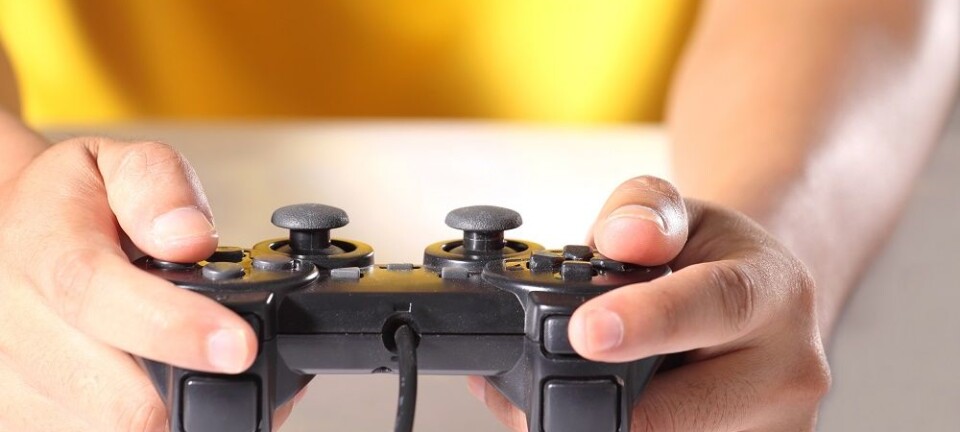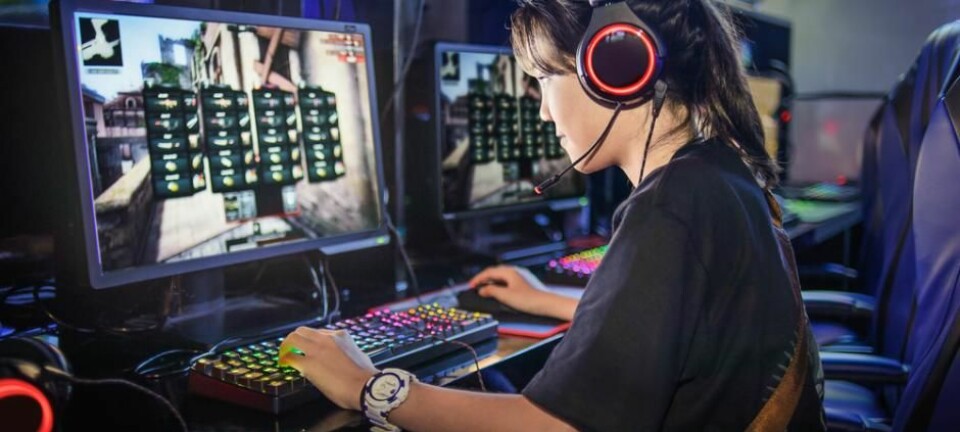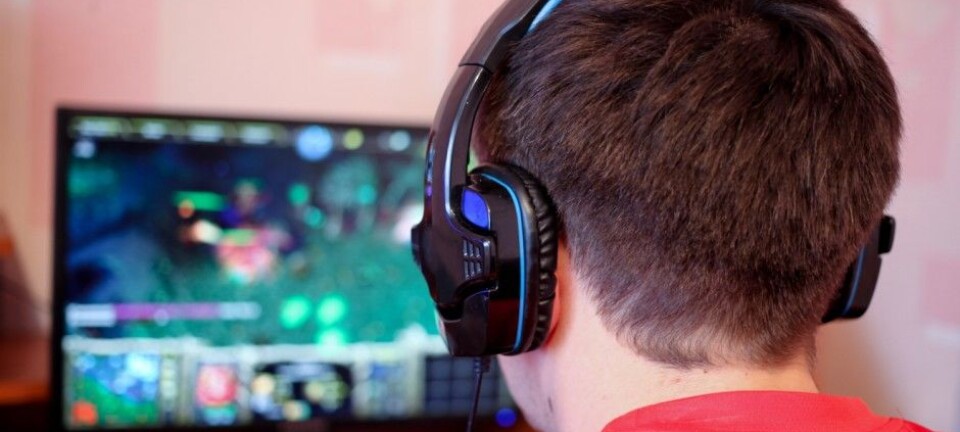
Computer game addiction is now a diagnosis
OPINION: Who’s decision to classify game addiction as a mental disorder could negatively impact the most vulnerable in society.
Is it possible to be addicted to computer games?
If it is, then where do we draw the line between passionate leisure activity and pathological behaviour? Recently, the global craze involving the game Fortnite has created some controversy.
In June 2018, The World Health Organisation (WHO) published a new International Classification of Diseases and officially classed 'gaming disorder' (often referred to as computer game addiction) as a new disease (see a description of diagnosis here).
However, this diagnosis is controversial. Several experts have pointed out that we have yet to see research that documents that we are in fact dealing with a mental disorder.

In this article, I will talk about the narrow biomedical understanding and the research on which WHO based their decision, and several important issues that the WHO does not seem to have taken into consideration.
New diagnosis is good for health – but whose health are we talking about?
I am surprised that other more social and health-related perspectives have not played a more important role in the final decision – not least in view of the controversy created by the diagnosis.
For example, the computer games’ own perspectives on solutions have not been considered, nor have the social issues and possibilities contained in the computer game.
That said, I do believe that the whole debate on computer addiction may have a preventive and possibly also health-promoting effect on many gaming adolescents. In fact, this has been the case for many years, as demonstrated by my research (see here, here, here and here).
By contrast, the question is then whether the diagnosis affects the group of socially deprived people who, according to Norwegian research (see here, here and here), are most susceptible to mental health issues from playing computer games as part of their everyday life – if it is at all possible to become mentally ill from the game itself.
The point is that the diagnosis indicates that individual gamers are the problem and it is their life choices that are wrong. This risks shaming people.
Could computer games be the right choice for some when everything else in life is difficult? Interestingly, this year the Danish Health Authority has not only supported individual treatment therapy, but has also supported a gaming project in Aarhus that focuses on this very issue.
Thorough work with blind spots
The decision to make gaming addiction a mental health diagnosis has been underway for many years.
However, the inclusion process was sped up after the American Psychiatric Association (APA) included the diagnosis in its diagnostic manual in 2013 as a 'condition' that should be studied more closely.
The WHO updates its own list of diagnoses approximately every 10 years, as some diseases disappear and others emerge.
After the APA’s inclusion of the diagnosis, WHO initiated a number of activities to clarify the possible health implications from an excessive use of internet, computers, smartphones, and other devices. You can see the results of the activities here.
It is an interesting read, as you gain insight into the knowledge on which the decision is based and the experts who were consulted.
The decision is primarily based on research by medical experts and clinical experience with human disorders. From the available material, the preparatory work seems to be both detailed and well-documented.
However, the material raises several issues which, in my opinion, should have been included in the final decision and should perhaps have resulted in a postponement of the approval.
There are four elements which should have been taken into consideration:
1. WHO’s decision is largely based on research from Asia. So is it an Asian health issue or a global one?
One issue concerns the basis of the research itself. The majority of the referenced research results and participating experts originate from Asian countries.
There is generally nothing wrong with that, but it may indicate that this is an Asian health issue. At the same time, the predominance of Asian research may indicate that this is rather a culturally oriented health risk and that it is conditional to the context of the gaming activity.
If gaming is an Asian health issue, then why classify it as a global health hazard?
2. No clear way to diagnose gaming addiction
Another issue is associated with the diagnosis itself. Clearly, the diagnosis permits clinicians to make the right decision as to whether a patient is ill or not.
When it comes to a behavioural diagnoses such as 'gaming disorder,' the diagnostic guidelines for clinicians need to be correct. After all, they use these guidelines to decide whether the condition is a disease, 'merely' a life crisis, or a problem of a social nature.
The boundaries for defining when gaming becomes excessive or pathological are vague and conditional on social norms.
The point is that behavioural diagnoses 'loop', as the Canadian philosopher Ian Hacking calls it. This means that the criteria for the diagnoses keep changing, and the clinical guideline for the diagnosis will therefore never be able to prevent the complex health issue that the diagnosis is in fact intended to fight.
The use of the medical disease concept is not as objective as implied by the scientific assumption. In principle, it’s not physiologically possible to distinguish between a healthy and sick body.
Instead, the difference lies in having a quantitative surplus or deficit of something physiological.
This is also why the neurobiological hypothesis of imbalance in dopamine secretion does not hold water when looking for an explanatory model.
The body is not able to register whether the dopamine level is associated with unhealthy or healthy response patterns; whether it is a case of passionate gaming, sexual excesses, a lovely dinner, or pathological behaviour.
Instead, the attempt to obtain objective knowledge of unhealthy gaming in everyday life forms the basis of a varied and ambiguous approach to pathological and healthy gaming.
3. WHO guidelines ignore the role that society plays in gaming
All of this leads to an important health issue: WHO’s medical diagnosis does not include social and the more societal aspects.
This is problematic because the diagnosis is not only the clinician’s guideline but also a regulation and control tool for the politicians when preparing strategies on public health.
Diagnoses are a public control tool that regulates the life of the individual citizen.
The diagnosis makes us reflect on what we want to do with our lives and who we want to be as humans. They sharpen our sense of normal accepted behaviour and what it means to step outside of it.
The diagnosis could help many, but will be detrimental to others
I pointed out earlier that the diagnosis had a preventive and possibly health-promoting effect even before it was included in the diagnostic manual.
It is often simply referred to as computer game addiction, and many children, adolescents and their families, already think about the possible consequences of excessive gaming.
Diagnosing gaming addiction has helped them in the sense that the debate on computer game addiction make children, young people and parents consider whether a 'good' gaming life really is that good when a person plays to excess.
But, for a small group of children and adolescents the diagnosis has a number of unintended consequences resulting in poor mental well-being.
Being diagnosed as an addict is stigmatising and creates conflicts that are so difficult to solve that it may lead to a short breakdown in relationships between parents and their children (see also here and here).
For example, one adolescent has described how conflicts in the home were so intense that they made him leave home. In some contexts, the self-regulating element in the diagnosis promotes mental dissatisfaction and other behavioural problems.
4. Gaming problems are also about inequality
The last issue concerns the social inequality in respect to health.
Several Norwegian reports have documented that everyday gaming problems are associated with socio-economic conditions.
According to the findings, problem gamers come from low-income families, where parents have no control over the activities of their children and have a conflict-ridden relationship with them.
The adolescents rarely do their homework. They often cut classes and have difficulty concentrating. They do not take part in leisure activities and often talk about being bullied.
They have problems with weight, they smoke, and drink more alcohol, and have smoked cannabis more often than other kids their age. They are often involved in criminal activity and other departures from the norm.
They suffer from symptoms of depression and have other mental difficulties such as loneliness and low self-worth.
Based on the Norwegian studies and my own qualitative research, it seems that the WHO’s regulating policy reaches the 'wrong' target group. The (positive) regulating effect of the diagnosis affects the boys of the middle -income and high-income families, but not the socially deprived – a group who use computer games to create meaning in an otherwise problem-ridden life.
They have few friends, prefer to play alone and choose the computer game because they have nothing else to do in their leisure time, and they make this choice without any intervention by their parents.
The problem gamers from the low-income group are therefore at risk of becoming stuck in a vulnerable and fragile social position.
---------------
Read this article in Danish at ForskerZonen, part of Videnskab.dk
Scientific links
- 'A weak scientific basis for gaming disorder: Let us err on the side of caution', Journal of Behavioral Addictions (2018), DOI: 10.1556/2006.7.2018.19
- 'Computer game addiction: What is the problem' (RUC)
- 'A young people's perspective on computer game addiction', Addiction Research & Theory (2013), DOI: 10.3109/16066359.2012.733466









